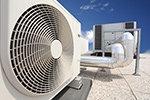
The Commission has published a reporton the functioning of the EU-wide quota system for hydrofluorocarbons (HFCs). The system was put in place in 2015 to drastically reduce the use of these greenhouse gases with a particularly potent warming effect. The gases have a range of applications in refrigeration and air conditioning equipment, as well as foaming agents or aerosol propellants. Under the system, manufacturers and users of these products are incentivised to switch to more climate-friendly alternatives to significantly reduce HFC emissions.
Since the introduction of the HFC quota system, The European Commission has been closely monitoring its effects on the market and innovation. In the initial phase that ran until 2018, prices for the gases that do most damage to the climate increased sharply, acting as a powerful motivation use more climate-friendly substitutes. Since then, the price of HFC gases in the EU has fallen from the peak in 2018, but is still several times higher than on the world market, in turn stimulating innovation to bring new technologies to the market in this sector.
The report also finds that climate-friendly alternatives are available in sufficient volumes, and that the initial issues of the supply of some HFC alternatives in the EU are no longer a present. Monitoring the market going forward and effectively preventing any illegal activities will remain important, especially given the phase-down step planned for 2021 (to 45% of the 2015 baseline) .
The quota system put in place by Regulation (EU) No 517/2014 on fluorinated greenhouse gases aims to reduce the use of HFCs by 79% by 2030. Emissions of these gases have dropped every year since 2014 as a result of the EU policy measures.
The findings of this report will serve as input to the review of the EU rules on fluorinated greenhouse gases that the Commission launched as part of the European Green Deal and the Climate Law proposal. The review aims to ensure that the rules are consistent with the EU’s objective of achieving a 55% net reduction in greenhouse gas emissions by 2030 and becoming climate neutral by 2050. The review will also confirm EU obligations related to hydrofluorocarbons under the Montreal Protocol on substances that deplete the ozone layer. The Commission aims to propose a new F-gas Regulation by the end of 2021.
Report on the availability of hydrofluorocarbons on the Union market
Details
- Publication date
- 18 December 2020
- Author
- Directorate-General for Climate Action
